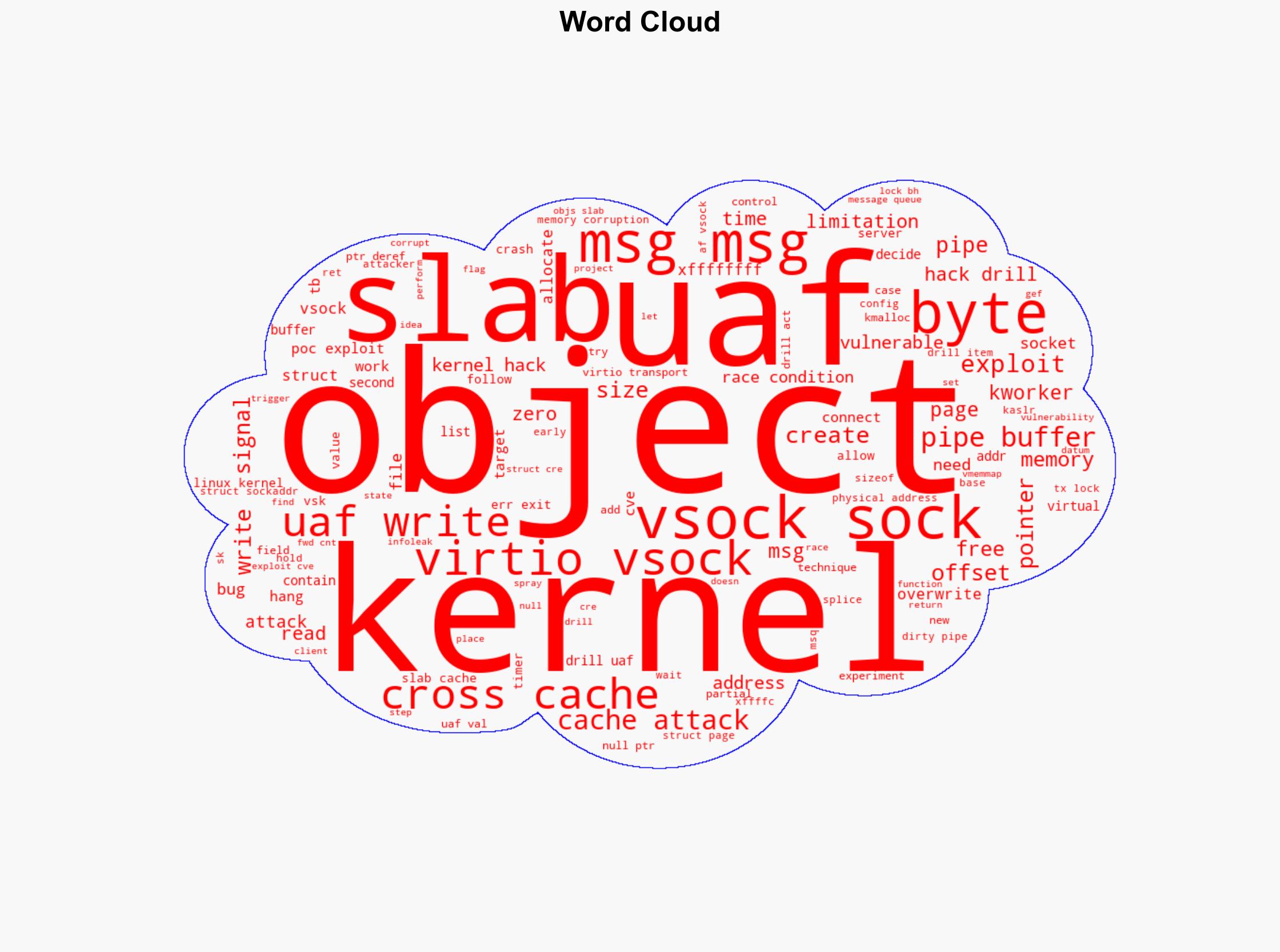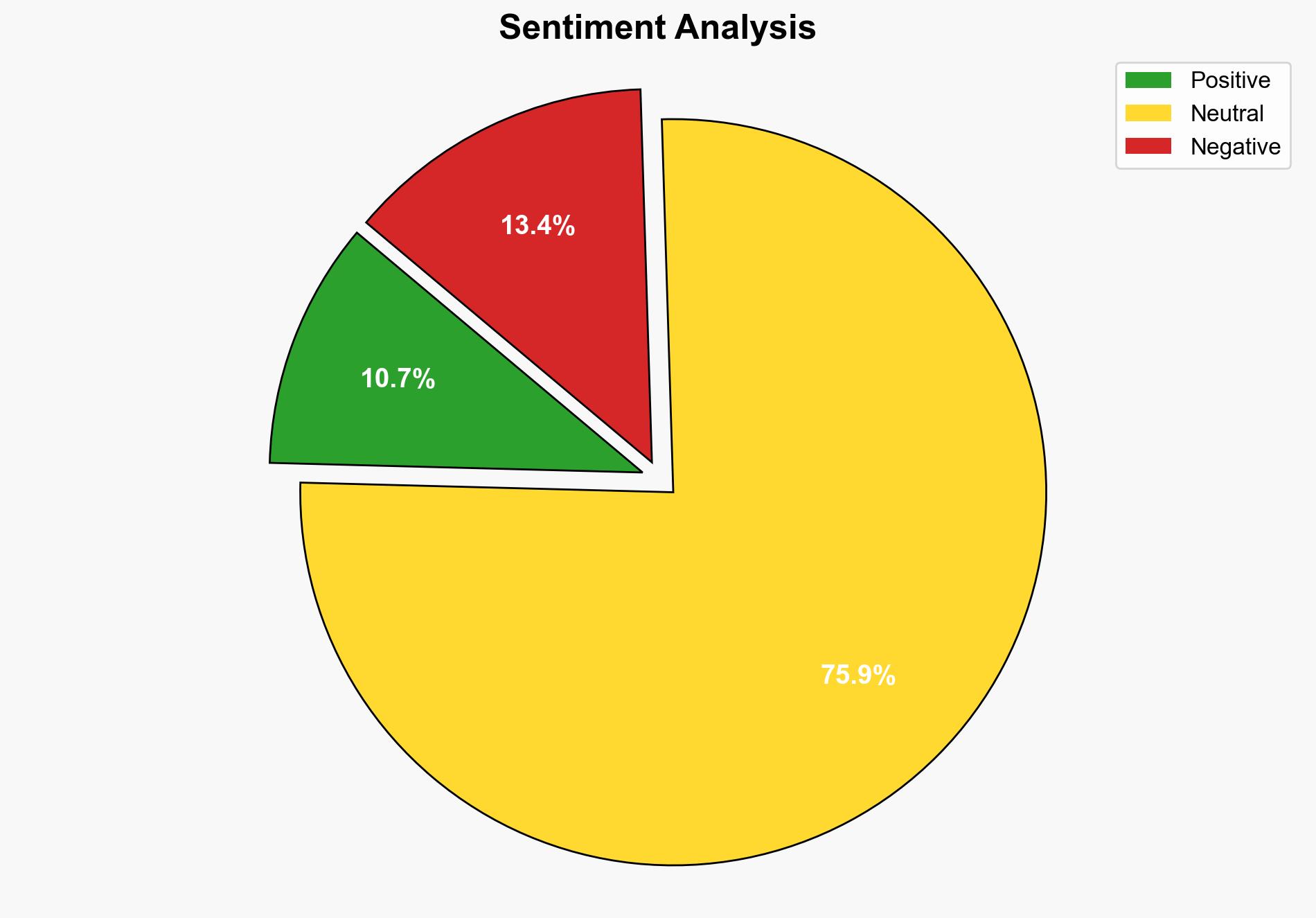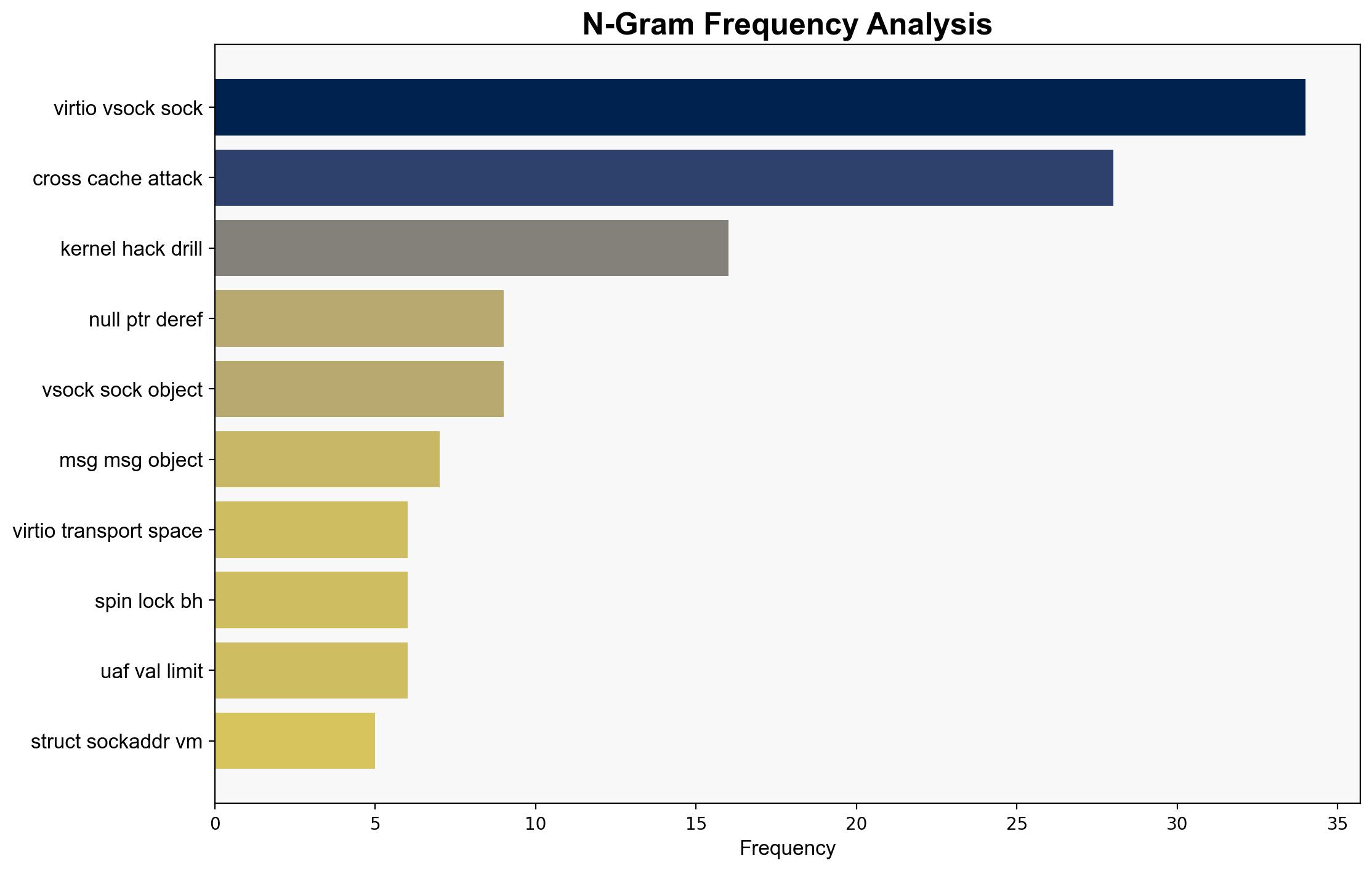Kernel-hack-drill and exploiting CVE-2024-50264 in the Linux kernel – Github.io
Published on: 2025-09-03
Intelligence Report: Kernel-hack-drill and exploiting CVE-2024-50264 in the Linux kernel – Github.io
1. BLUF (Bottom Line Up Front)
The analysis suggests that the exploitation of CVE-2024-50264 poses a significant cybersecurity risk due to its potential for privilege escalation and system compromise. The hypothesis that this vulnerability could be leveraged for widespread attacks is better supported. Confidence level: Moderate. Recommended action: Immediate patching and enhanced monitoring of systems using the affected Linux kernel versions.
2. Competing Hypotheses
1. **Hypothesis A**: CVE-2024-50264 is primarily a research interest and will not see widespread exploitation due to its complexity and the need for specific conditions to be met.
2. **Hypothesis B**: CVE-2024-50264 will be actively exploited in the wild, particularly targeting systems with unpatched Linux kernels, due to its potential for privilege escalation and the availability of proof-of-concept exploits.
Using the Analysis of Competing Hypotheses (ACH) 2.0, Hypothesis B is more likely given the detailed exploration and proof-of-concept provided in the source material, suggesting a feasible path for exploitation.
3. Key Assumptions and Red Flags
– Assumptions: It is assumed that the complexity of the exploit limits its use to highly skilled attackers. Another assumption is that the vulnerability’s impact is significant enough to warrant attention despite its complexity.
– Red Flags: The possibility of underestimating the capability of threat actors to overcome the exploit’s complexity. The lack of information on current patch adoption rates could skew risk assessment.
– Blind Spots: Limited visibility into how quickly patches are being applied across different sectors and regions.
4. Implications and Strategic Risks
The exploitation of CVE-2024-50264 could lead to significant disruptions in sectors reliant on Linux-based systems, including critical infrastructure and cloud services. The potential for cascading effects exists if attackers use this vulnerability as a foothold for further system compromise. Geopolitically, nations with high Linux usage may face increased cyber threat levels.
5. Recommendations and Outlook
- Immediate deployment of patches for CVE-2024-50264 across all affected systems.
- Enhance monitoring for unusual activity indicative of exploitation attempts.
- Scenario-based projections:
- Best Case: Rapid patch deployment mitigates risk with minimal exploitation incidents.
- Worst Case: Delayed patching leads to widespread exploitation and significant system compromises.
- Most Likely: Mixed patch adoption results in targeted attacks on vulnerable systems.
6. Key Individuals and Entities
– Hyunwoo Kim and Wongi Lee: Researchers who disclosed the vulnerability.
– Viktor Vasnetsov: Mentioned in relation to the vulnerability exploration.
7. Thematic Tags
national security threats, cybersecurity, counter-terrorism, regional focus





